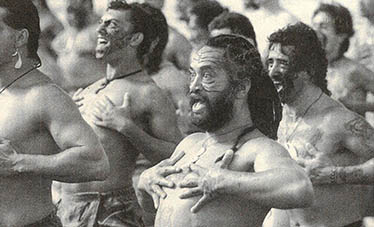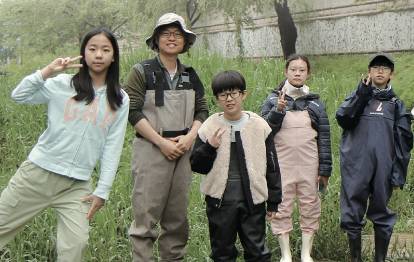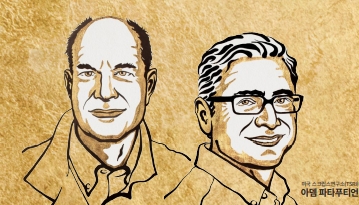
In a recent 'Daedulus' column in the journal Nature, David Jones proposed a perhaps whimsical theory that nevertheless makes sense, given the even more whimsical nature of human beings. The idea is that lightly pigmented human beings have a strong desire to get a good tan for the same reason that some animals are darker on top than underneath-protective coloration.
For instance, the dark top side of some fish is not easily seen by a predatory bird or human trying to find the fish from above. And the light bottom side isn't easily seen by aquatic predators seeing the prey from below, against a light surface.
Be that as it may, human history shows that in many countries it was socially valuable to be as light as possible, because being tan meant that you were a field laborer, exposed to the sun. Only the aristocracy could afford to shelter themselves indoors from the sun and go out wearing sunbonnets or using the shade of parasols.
The aristocracy also enslaved people who possessed natural pigmentation that protected them from the sun. This exploitation of people resulted in this same aristocracy looking down on anyone with darker skin.
Such prejudice is ironic, for there is only one biological advantage of light skin. In the cloudy north, where the sun is up for fewer hours in winter, light skin manufactures vitamin D with minimal exposure to the sun. But with vitamin D readily available in milk or in capsules, no darkskinned person living in the north need fear getting rickets.
After the industrial revolution, more people worked in factories than outdoors in the fields. The paleness of sun-deprived factory-workers' skins showed that they were usually working throughout daylight hours and with few, if any, vacations. Soon the rich, who could afford vacations in sunny climes, began to sport tans as symbols of their privileged position.
Eventually the rich began to get skin lesions from exposure to the sun, and took some notice of the problem. Suntan oils increased in sales, but bonnets did not come back. People still didn't understand just what the sun was doing to them.
Along came World War Ⅱ. Light-skinned troops in the South Pacific, all of them young, were showing up with skin cancers ordinarily seen only in older people. Research on sun block medication went on (I even did some of the research myself, while still at college) and the results are now available in every drug store. Para-amino-benzoic acid (PABA) was shown to be effective in blocking the burning rays of the sun. Other sunscreens have since been devised, especially for people allergic to PABA.
There are several kinds of skin cancer. Most lethal are the melanomas, cancers of the pigment producing cells of the skin, or melanocytes. Some melanomas can be totally removed; others spread before it's suspected that a melanoma exists.
Researchers at the University of California at San Diego have postulated that most sunscreens (except those that block everything) don't block ultraviolet-b, which can reach into the deeper layers of the skin and damage melanocytes. This means that if someone wearing sunscreen stays out in the sun a long time because he's protected from sunburn, he may be still receiving rays that could cause melanoma.
The tremendous rise worldwide in incidence of melanoma has prompted vigorous research, especially on vaccines to combat the disease. The vaccines attempt to induce the body's immune system to kill the melanoma cells. Gene therapy is another approach being tried.
Squamous cell and basal cell cancers are the most common skin malignancies of poorly pigmented skins. In the United States alone, these make up two-thirds of all cancers, with 600,000 new cases each year. Most are caused by sunlight but can also occur from exposure to X-rays, to arsenic, or possibly to the human papilloma virus.
Squamous cell cancers, arising from the Malpighian cells of the epithelium, make up 100,000 of the new skin cancer cases. Squamous cell cancer grows faster and metastasizes(spreads to other parts of the body), but if caught early can be removed.
Basal cell cancers are usually slow-growing and seldom metastasize, but they must be removed as they will invade locally. Since skin cancer is now so prevalent, most doctors and many patients can recognize it easily and cure it with little if any disfigurement.
Some people worry that the heavy use of sunscreens and /or total avoidance of sun exposure will increase the incidence of avitaminosis D(and thin bones) in people whose skin will then not manufacture vitamin D. But it's much better to eat vitamin D-added foods or take cod liver oil than to risk skin cancer, especially with the hole in the protective ozone layer growing.
The latest word on skin cancer comes from Australia. It seems that dogs, cats, even cattle and pigs can also get skin cancer, especially if they are light-colored. Native Australian animals have skin pigment that protects against the sun, but the pets(from European stock) do not, and are vulnerable, especially at the ear points and the nose. The Royal Society for the prevention of Cruelty to Animals of Australia says to keep pets indoors when the sun's ultraviolet is at its worst-between 11 a.m. and 3 p.m.
Pets lick off sunscreen creams. Don't lick off your own.
최근 '네이처'지의 다이달로스 칼럼에서 데이비드 존은 묘하긴 하지만 그럴듯한 이론을 제시하였는데, 이는 특히 인류라는 묘한 속성을 가진 존재의 경우 더 적합하다. 그 요지는 일부 동물들이 보호색으로 아랫쪽 부위보다 윗쪽을 더 어둡게 하려는 것과 같은 이유로 밝은 피부색의 사람들은 피부를 적당히 태우려는 강한 욕구를 가지고 있다는 것이다.
예를 들어 위부분이 검은 물고기는 위에서 자신을 잡으려는 육식조류나 일간에게 쉽게 발견되지 않는다. 그리고 밝은 빛깔의 아래쪽은 밝은 수면을 향하여 아래에서 먹이를 찾고 있는 물 속의 육식동물에게도 잘 보이지 않는다.
그렇다 하더라도 인류의 역사를 살펴보면 많은 나라에서 피부가 밝은 색일수록 사회적 지위가 더 높음을 의미하였다. 피부가 탔다는 사실은 태양에 노출되어 일하는 사람이라는 것을 의미하기 때문이다. 귀족들만이 집안에서 태양을 피할 수 있었고 외출할 때는 차양이 있는 모자나 파라솔을 이용했다.
귀족들은 태양빛에도 보호받을 수 있는 선천적인 유색인종을 노예로 고용하였다. 이러한 노동력 착취는 자신보다 검은 피부를 가진 인종을 멸시하는 귀족정치로 이어졌다.
이러한 편견은 아이로닉한데, 밝은 색의 피부는 단하나의 생물학적 이점만을 가지고 있기 때문이다. 즉 겨울에 태양이 몇 시간 정도만 떠 있는 우중충한 북쪽 지방에서 밝은 색의 피부는 태양에 조금만 노출되어도 비타민D를 생성한다. 그러나 비타민 D는 우유나 약을 통해서 흡수할 수 있기 때문에 검은 피부를 가진 사람이라도 북쪽에 살면서 구루병을 걱정할 필요는 없다.
산업혁명 이후로 많은 사람들이 야외보다는 공장안에서 일하게 되었다. 빛을 보지 못한 공장노동자의 창백한 피부는 짧은 기간의 휴가 외에는 낮 시간내내 공장 안에 있었음을 보여준다. 곧 쾌청한 날씨에 휴가를 즐길 여유가 있는 부유층이 그들의 특권을 나타내는 상징으로 피부 태우기를 즐기기 시작했다.
결과적으로 부자들은 태양빛에 대한 노출에서 오는 피부 손상을 입게 되었고 문제점을 약간은 인식하게 되었다. 일광욕에 쓰이는 기름 판매량이 늘어났지만 모자는 다시 사용되지 않았다. 사람들은 여전히 태양이 그들에게 어떤 영향을 미치는지에 관해 이해하지 못했다.
2차세계대전이 시작되었다. 노인들에게나 보일 만한 피부암이 남태평양에 주둔한 백인종의 젊은 군인들에게서 나타나기 시작하였다. 태양빛을 차단하는 연구가 시작되었고(필자도 대학시절 이러한 연구에 참가했었다) 그 결과는 오늘날 약국에서 구입할 수 있는 각종 약들로 나타났다. 파라아미노벤젠산(PABA)이 태양광선을 막는데 효과적이라는 것이 입증되었다. 그뒤 특별히 PABA에 알레르기가 있는 사람을 위해서 다른 일광차단제가 제조되었다.
피부암에는 여러가지 종류가 있다. 이중 가장 치명적인 것은 멜라닌세포나 색소 생성세포에 생기는 암인 흑색종이다. 몇 종류의 흑색종은 완전히 제거될 수 있지만 나머지는 암이 완전히 퍼지고 나서야 그 존재를 알아차리게 된다.
샌 디에고의 캘리포니아 대학 연구진에 의하면 대부분의 일광차단제들도 그것이 모든 빛을 완전히 가리는 것이 아닌 다음에야 피부 깊숙이 침투해서 멜라닌세포에 영향을 주는 적외선-b와 같은 광선은 막지 못한다고 한다. 즉 오랜시간 태양 아래에서 있을 경우 일광차단제를 발랐다고 하더라도 흑색종을 일으키는 광선은 여전히 받게 되는 것이다.
흑색종과 관련, 전 세계적으로 일어난 수많은 발병으로 인해서 특별히 그 병과 싸울 백신을 만드는 일이 활기를 띠게 되었다. 이 백신은 인간의 면역시스템을 조작하여 흑색종의 세포를 죽인다. 다른 해결책으로는 유전자 요법이 시도되고 있다.
편평세포암과 기저세포암은 약한 색소를 가진 피부에 있는 가장 흔한 악성피부암이다. 이는 미국 전체 암의 3분의2에 해당되며 매년 60만건 정도가 발생한다. 대부분 태양광선에 의한 것이지만 X선, 비소 혹은 사람의 사마귀 바이러스에 의해서도 발생할 수 있다.
상피세포의 말피기세포에서 발생하는 평편세포암은 10만 여종의 새로운 피부암을 만들어낸다. 평편세포암은 점점 빨리 커지고 전이(몸의 다른 부분에 번지는것)되지만 초기에 발견되면 제거할 수 있다.
기저세포암은 느리게 증가하고 거의 전이되지 않지만 국소적으로 침투하기 전에 제거되어야 한다. 피부암이 널리 퍼진 후로, 대부분의 의사와 많은 환자들이 그것을 쉽게 진단해서 거의 손상없이 치료한다.
비타민 D를 만들지 못하는 피부를 가진 사람이 일광차단제를 과도하게 사용하거나 일광을 완전히 피함으로써 뼈가 가늘어지는 비타민 D 결핍증을 일으킬 수도 있다고 우려하는 사람도 있다. 하지만 특히 오존 방어막의 구멍이 커지고 있는 요즘에는(일광욕보다는) 비타민 D가 있는 음식이나 대구의 간유를 먹는 편이 훨씬 좋다.
피부암과 관련된 가장 최근의 소식은 오스트레일리아에서 나왔다. 개, 고양이 도는 돼지나 가축들도 밝은 피부색을 가졌다면 피부암에 걸릴 수 있다. 오스트레일리아의 토착 동물들은 태양광선을 막는 피부색소를 가지고 있지만 유럽산의 애완동물은 그러한 면역성이 없다. 이들은 특히 귀의 끝부분이나 코 끝에 상처받기 쉽다.
오스트레일리아의 왕립 동물학대방지협회는 태양의 자외선이 가장 강한 시간인 오전 11시에서 오후 3시 사이에는 애완동물을 집안에 두라고 말한다.
애완동물은 일광차단 크림을 핥아 먹는다. 당신의 일광차단제도 닦아내서는 안된다.

















